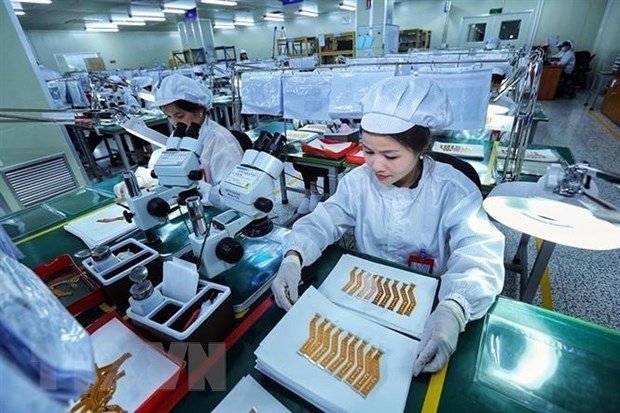 Society
Society

HCM City authorities will continue to resolve flooding and traffic congestion, build major transport works, and streamline administrative procedures to reach “smart city” status by 2030, a city official has said.

|
| A view of HCM City. The city will focus on major transport projects, among other initiatives, to become a smart city by 2025. VNA/VNS Photo Hằng Trần |
HCM CITY — HCM City authorities will continue to resolve flooding and traffic congestion, build major transport works, and streamline administrative procedures to reach “smart city” status by 2030, a city official has said.
Speaking at a recent city People’s Council meeting, Nguyễn Thanh Phong, chairman of the city People’s Committee, said that two transport projects worth more than VNĐ12 trillion (US$521.8 million) have been approved.
These include An Phú Intersection in Thủ Đức new city and the renovation of Tham Lương, Bến Cát and Nước Lên canals, to be implemented from now to 2025, according to Phong.
It will cost VNĐ3.926 trillion to build An Phú intersection, including VNĐ1.8 trillion from the central State budget and VNĐ2.126 trillion from the city budget.
The three-level intersection will have overpasses and a tunnel. It will start from the approach road to the HCM City-Long Thành-Dầu Giây expressway and end at the Lương Định Của Street, which often sees serious congestion.
In addition, the upgrade of the Tham Lương, Bến Cát and Nước Lên canals will need VNĐ8.2 trillion, including VNĐ4 trillion from the State budget and VNĐ4.2 trillion from the city budget.
The 32km-long project goes through District 12 and Bình Tân, Tân Phú, Tân Bình, Gò Vấp, Bình Thạnh and Bình Chánh districts.
It is expected to help reduce flooding in the central business district and the northwestern part of the city. It will also improve waterway connections between the city and southern provinces.
‘Smart city’ status by 2025
Phong said the city would focus on “research and development of AI applications in HCM City” in order to become a smart city by 2025.
Under the programme to become a smart city by 2025, a database of all sectors, ranging from housing, transport and environment to healthcare, will share data with all of the city’s administrative departments.
This will help social organisations, businesses and residents have better access to public information and services online through mobile devices and other means, according to Phong.
The city will also focus on developing AI technologies and improving human resources by using AI in education and training, and enhancing academic communications with foreign AI professionals.
In addition, an innovative urban area in the eastern part of the city will continue to be built. The city has already approved the establishment of Thủ Đức new city by merging the three eastern districts of 2, 9, and Thủ Đức.
The new city will cover more than 211sq.km and be home to more than 1.1 million people. It is expected to promote economic growth in the city and the southern region.
It will serve as a centre for three main functions: scientific and technological research and application; education and training of high-quality human resources; and production and trade of hi-tech products and services.
It is expected to contribute a third of the city’s GDP, accounting for 7 per cent of national GDP.
The city has been working on the eastern innovative urban area project, including the Thủ Thiêm New Urban Area in District 2, the Northwest urban area, and the Cần Giờ sea tourist urban area, according to Phong.
Phong pointed out that the city needs more capital for public investment in infrastructure.
He said, for example, from 2016-2021, the city needed VNĐ302.8 trillion to implement nearly 1,950 public transport projects, but the city only managed to allocate about half of that amount.
The city has asked the central government for permission to raise the budget-revenue retention ratio to 24 per cent in the 2021-2025 period, and 33 per cent in the 2026-2030 period. The latter ratio was granted to the city back in 2003. The ratio refers to revenue that the city gives to the central government.
“The new ratio will ensure that the city will achieve sustainable development,” according to Phong.
With a population of 13 million, HCM City, as the nation’s economic locomotive, contributes 24 per cent of the country’s GDP and 27 per cent of the national budget. — VNS









